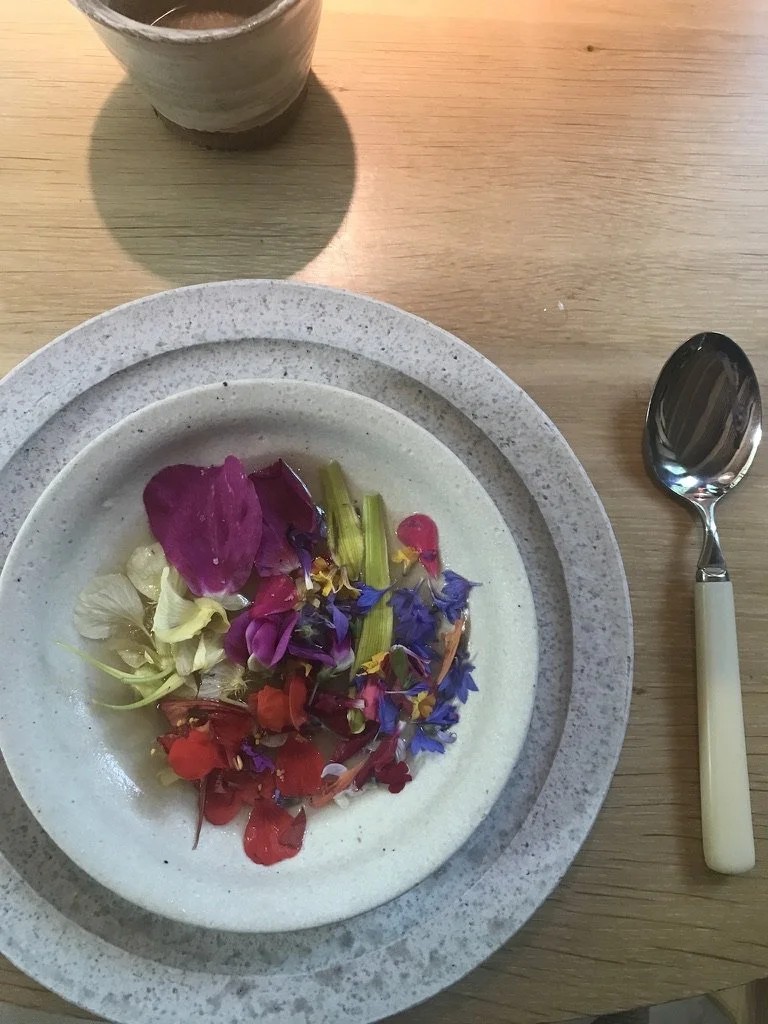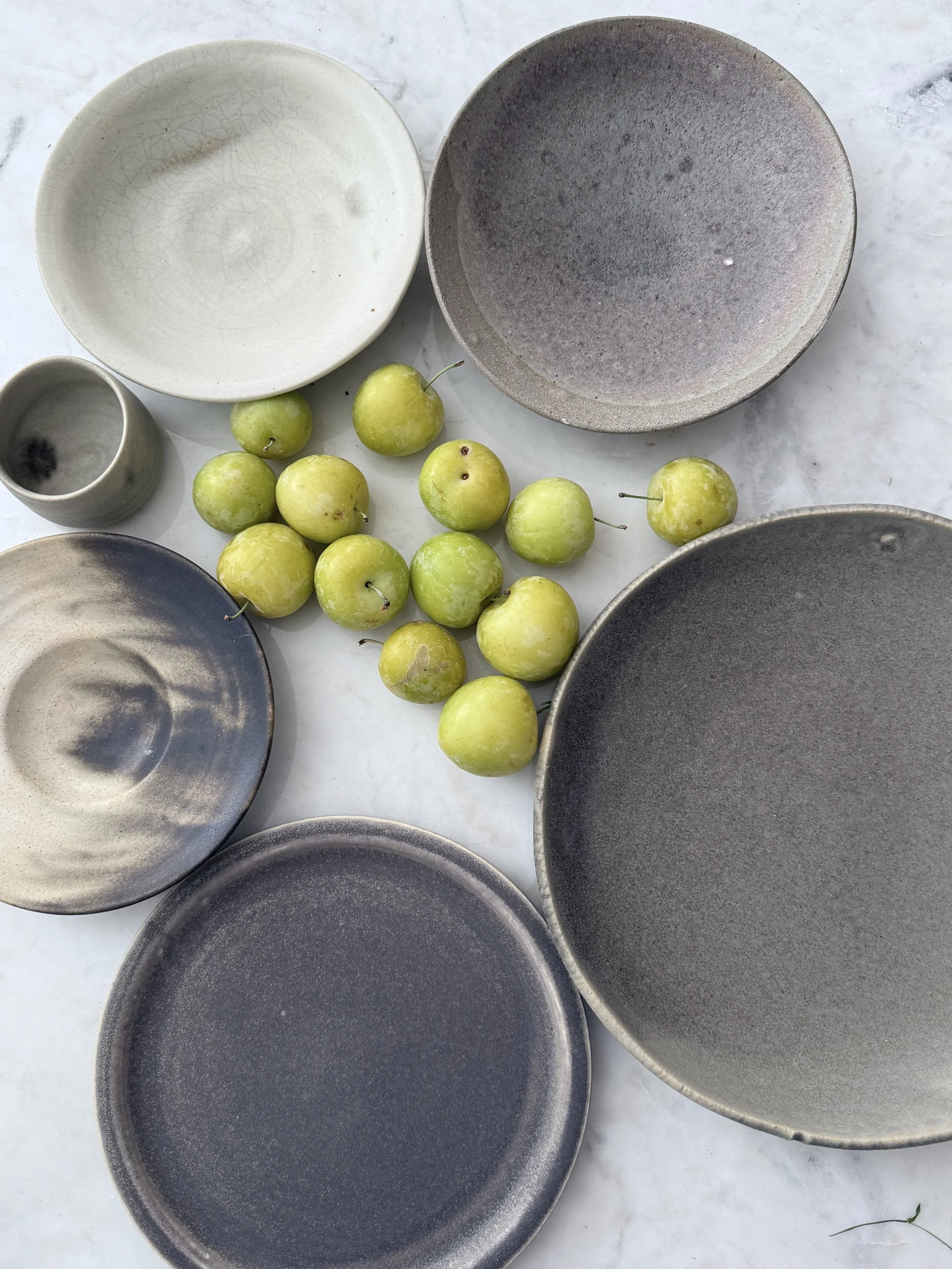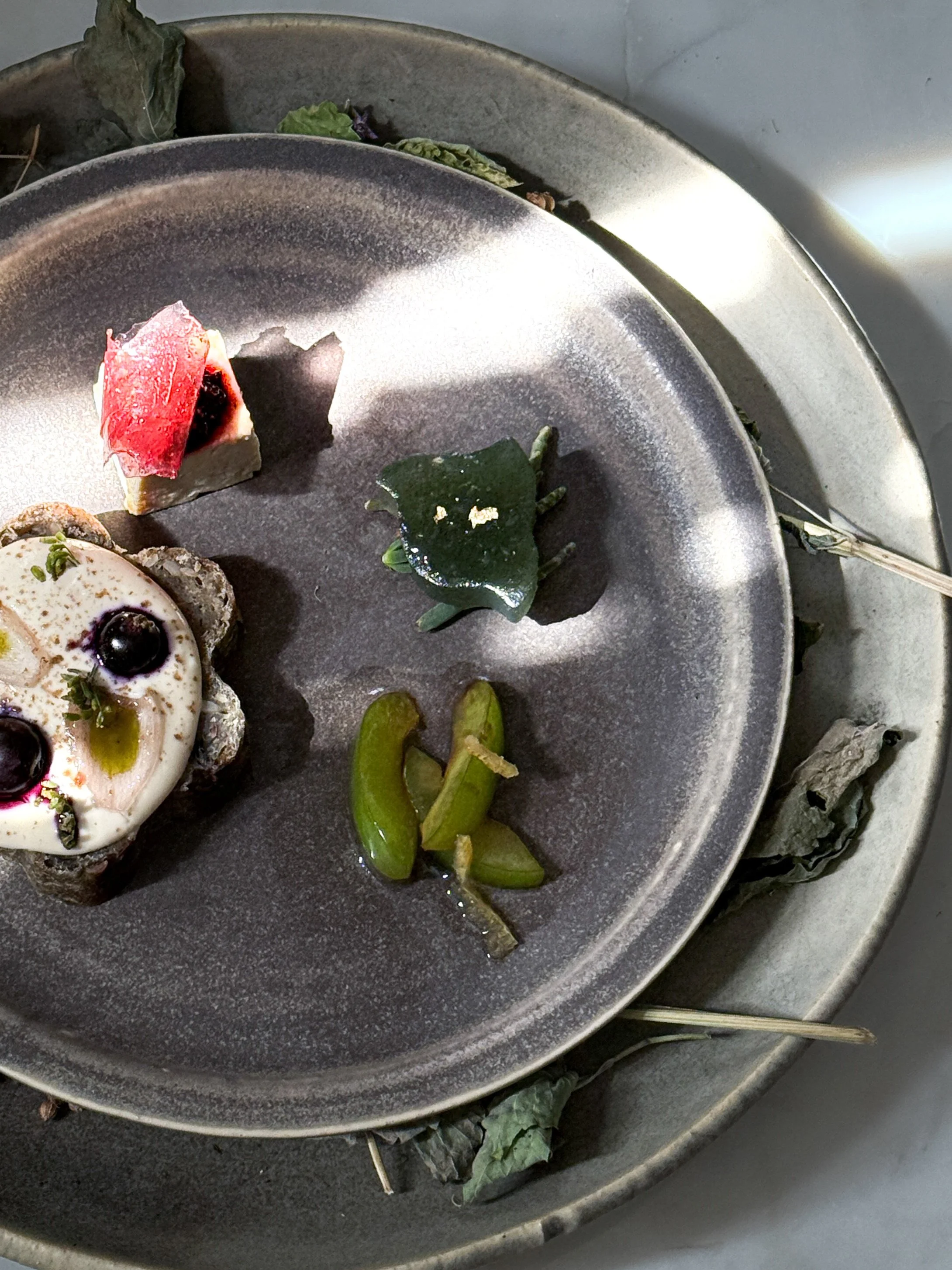Intimate Equinox Dinner · Five-Course Plant-Based Menu & Ceramic Art
Mæst Food × Ceramics: The Equinox Table
In new nordic fine dining, vessels matter as much as the food they carry.
When I interned at Inua and later dined at Noma, I saw how ceramics and other vessels created the dining experience.
That was more than just using tableware. It was almost choreography.
This spring, in Oslo, the exhibition New Nordic: Cuisine, Aesthetics, and Place confirmed what I had felt all along: ceramics are not backdrop but dialogue — they hold the story of the dish and the place it was born.
My inspiration also comes from cha-kaiseki, the traditional cuisine of the Japanese tea ceremony. In cha-kaiseki, vessels do more than hold food — they express the host’s aesthetic sensibility and the spirit of wabi. The choice of ceramics heightens the flavors and the sense of season, creating an emotional connection between host and guest. Each piece is selected to match the dish and the mood of the tea gathering, enriching the entire experience.
After years of hosting dinners in restaurants and cafés, I wanted to create something more intimate. Those venues were wonderful, but not quite suited for limited-edition, handmade ceramics. Some restaurants might have special pieces or they are rarely used for regular service — these works are made slowly, one by one, and exist in very small numbers. This series finally allows me to bring those rare pieces to the table, just as I had imagined when I first dreamed up this project.
I dreamed of creating an event series that would let me use these pieces as they were meant to be used: fleetingly, in the moment, for a handful of guests.
Thus began the Mæst Food ceramic dinner series.
The first edition in August was with Janaki Larsen, whose elegant, chalky palette brought a meditative tone to the table. Her works has been used at Noma, Gem NYC, and many more restaurants around the world.
For the second edition, I’ve invited Vancouver ceramicist Jonathan O’Leary, a rising voice in the Canadian ceramic scene whose work currently appears at Vancouver International Airport and in some of Canada’s top restaurants including Naagan (the 9th of Canada’s top 100.).
His work reminds me of Raku — he is using wheel, yet pieces that appear almost unfinished, with irregular forms and spontaneous glazes. There’s a elegance in their roughness, a beauty that comes from imperfection and immediacy.
*Raku is traditionally low-fired, a bit rough, sometimes warped or smoky but its beauty lies in that imperfection and unpredictability.
For this dinner, Jonathan has designed not only the service pieces but also a limited set for each guest to take home — a tangible fragment of the night.
The evening unfolds on September 27, during Shūbun, the autumn equinox. Expect a five-course, fully plant-based menu rooted in Japanese seasonality, touched by Nordic sensibility, and grounded in Pacific Northwest ingredients. The table will be Nordic-vintage in style — natural, minimal, with a hint of ceremony.
Seats are limited by design.Tickets are here









